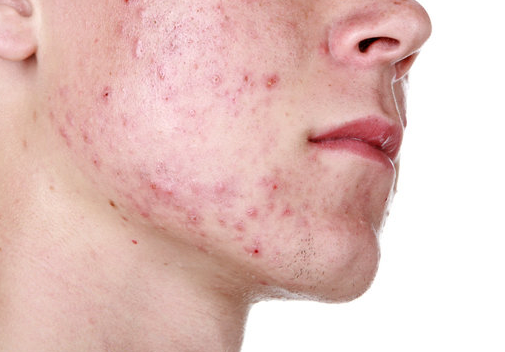Is Your Skin Purging or Reacting? How to Tell the Difference

When you start using a new skincare product, it's normal to experience some changes in your skin. Sometimes, though, those changes can be difficult to interpret. Is your skin purging or reacting? These two phenomena can look similar at first glance, but they have different causes and timelines. In this blog post, we'll discuss the differences between purging and reacting, how to tell which is happening to your skin, and what you can do about it.
What is skin purging? Purging happens when your skin is cleansing itself of impurities and dead skin cells. This process occurs when you introduce new skincare products that contain active ingredients such as retinoids, AHAs, and BHAs. These substances stimulate cell turnover, which can cause an increase in pimples, blackheads, and other blemishes. You may notice that purging occurs in areas where you typically have breakouts, such as your chin or forehead.
On the other hand, skin reacting is a response to an irritant or allergen. If you're experiencing a reaction, you may develop rashes, hives, redness, or stinging sensations. Reactions can occur in response to any skincare product, including ones you've used before without issue. The key difference between purging and reacting is that purging is a normal part of the skin's natural renewal process, while reacting is the result of an external trigger.
So, how can you tell if your skin is purging or reacting? One clue is the timeline. Purging typically occurs within the first 4-6 weeks of using a new product. Reacting can occur immediately or take longer, and may persist even after discontinuing use of the product. If you're not sure whether your skin is purging or reacting, take a closer look at the symptoms and patch the product on your forearm or neck area for 24 hours and see if there is a reaction. Purging will typically result in blemishes that come to a head and heal relatively quickly, while reactions can cause itchiness, burning, or persistent redness.
If you're purging, there's not much to do except wait it out. The process should resolve itself within a few weeks, and you'll be left with clearer, smoother skin. However, if you're experiencing a reaction, you'll want to identify the irritant and reduce your exposure to it. Start by discontinuing use of any new products, and then reintroduce them one by one to see if there's a particular ingredient that's causing the problem.
Finally, if you're trying to prevent either purging or reacting, there are a few things you can do. First, start slowly when introducing new skincare products. Don't try to overhaul your entire routine at once, or you may trigger a reaction or purge. Instead, I recommend adding one new product at a time and give your skin a chance to adjust. Additionally, be mindful of your application technique. Over exfoliating or using too much product can irritate your skin even more.
Understanding the difference between purging and reacting is essential for proper skincare management. While both can lead to breakouts, the causes and timelines are different. If you're purging, be patient and let the process run its course. If you're reacting, identify the irritant and reduce your exposure to it. Whether you're dealing with purging or reacting, start slowly when introducing new products and be mindful of your application technique. With a little knowledge and patience, you'll be on your way to clearer, healthier skin!
If you are new to Vasseur Skincare or need help choosing the right skincare for you, click here to look at our helpful skincare guide or here if you wanted to schedule a consultation with our Vasseur Skincare team members and they will help you find the right products for your specific needs.
Leave a comment
Comments will be approved before showing up.
Also in Education
Copper Serum and Red Light Therapy: Your New Skincare Power Duo
Learn how combining copper peptide serum with red light therapy can boost collagen, reduce wrinkles, and enhance your skin's health for radiant results.
Green Tea Serum & Red Light Therapy: The Ultimate Skin Duo
Discover how combining green tea serum with red light therapy can boost collagen, fight aging, and give you radiant skin. Learn how to use them together.
Boost Red Light Therapy with Copper Peptide & Green Tea Serums
Learn how to combine red light therapy with copper peptide and green tea serums to enhance collagen production, reduce wrinkles, and achieve radiant skin.